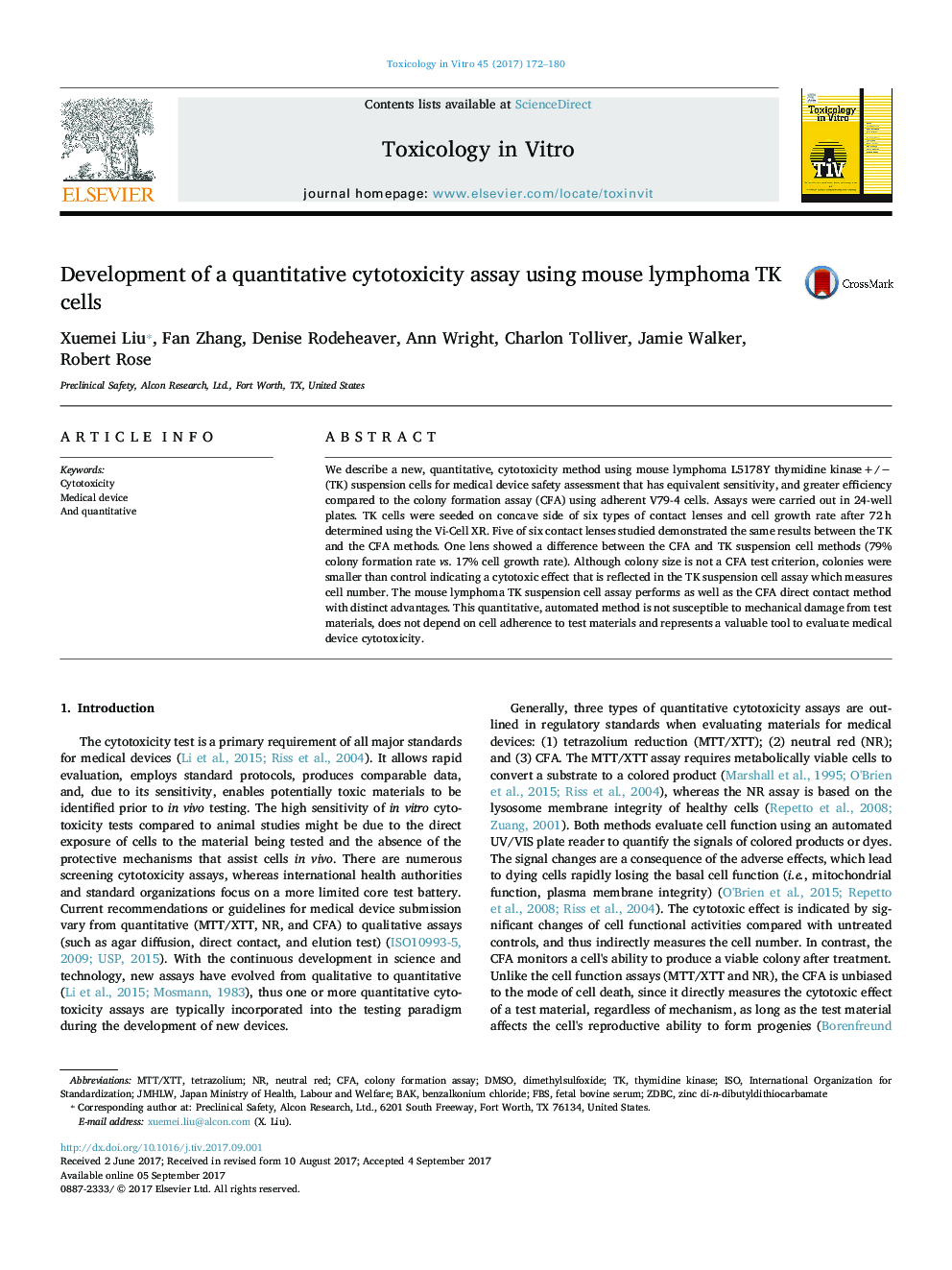| Article ID | Journal | Published Year | Pages | File Type |
|---|---|---|---|---|
| 5562604 | Toxicology in Vitro | 2017 | 9 Pages |
â¢Cytotoxicity tests for materials that have contact with tissues continue to evolve.â¢Current assays are impacted by mechanical damage from test substances.â¢A new method uses suspension mouse lymphoma L5178Y thymidine kinase +/â (TK) cells.â¢Cytotoxicity is measured using a cell counter combined with Trypan Blue to show the number of live and dead cells.â¢This method may allow early detection of toxic leachables by medical devices.
We describe a new, quantitative, cytotoxicity method using mouse lymphoma L5178Y thymidine kinase +/â (TK) suspension cells for medical device safety assessment that has equivalent sensitivity, and greater efficiency compared to the colony formation assay (CFA) using adherent V79-4 cells. Assays were carried out in 24-well plates. TK cells were seeded on concave side of six types of contact lenses and cell growth rate after 72 h determined using the Vi-Cell XR. Five of six contact lenses studied demonstrated the same results between the TK and the CFA methods. One lens showed a difference between the CFA and TK suspension cell methods (79% colony formation rate vs. 17% cell growth rate). Although colony size is not a CFA test criterion, colonies were smaller than control indicating a cytotoxic effect that is reflected in the TK suspension cell assay which measures cell number. The mouse lymphoma TK suspension cell assay performs as well as the CFA direct contact method with distinct advantages. This quantitative, automated method is not susceptible to mechanical damage from test materials, does not depend on cell adherence to test materials and represents a valuable tool to evaluate medical device cytotoxicity.
